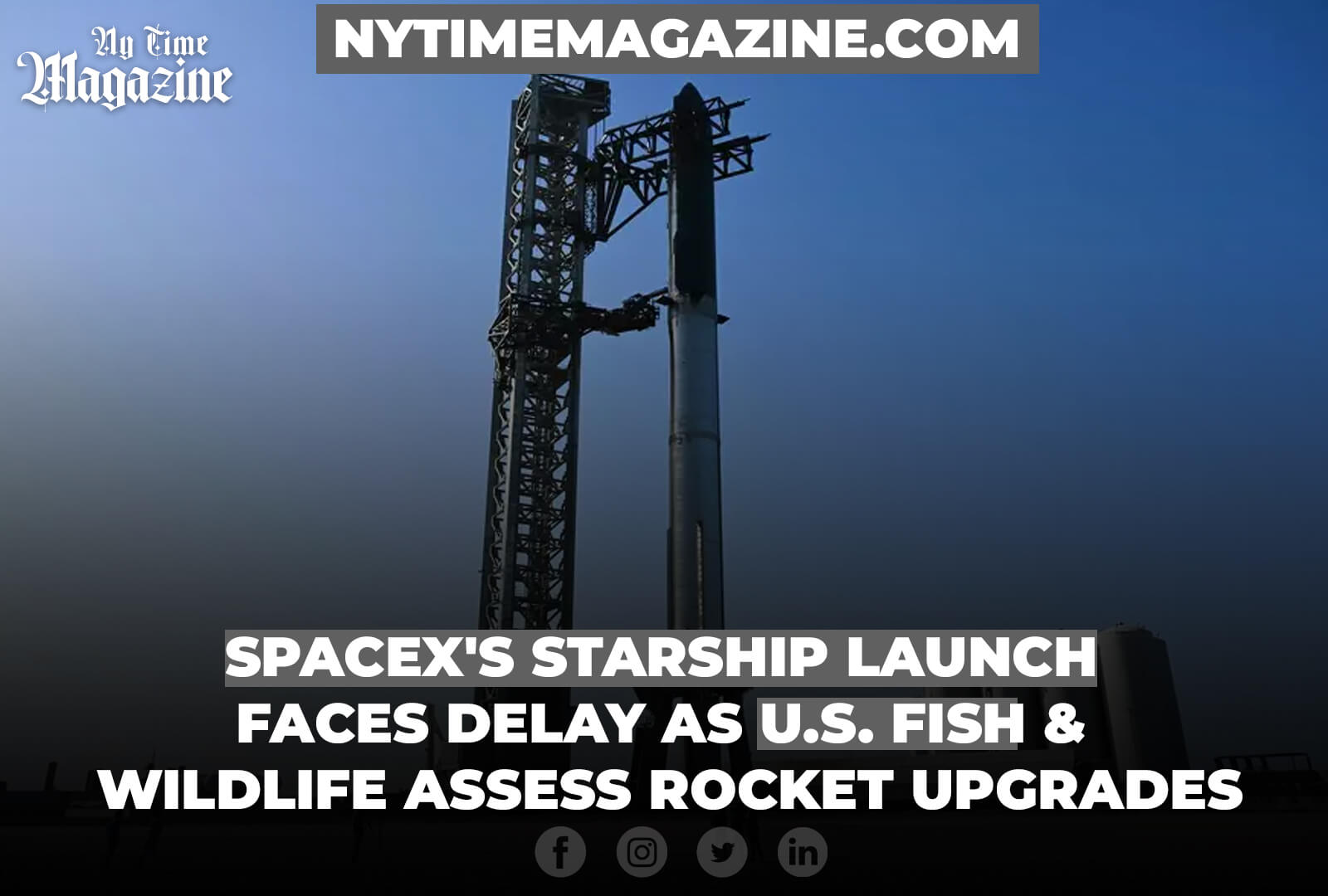In the world of space exploration, the spotlight has been firmly fixed on SpaceX’s Starship and its upcoming launch. However, this highly anticipated event might experience a delay due to the meticulous evaluation by the U.S. Fish and Wildlife Service (FWS) regarding critical rocket upgrades.
Contents
- 1 Starship Launch Delayed by FWS Assessment
- 2 Environmental Concerns Surrounding SpaceX’s Starship Launch
- 3 Community Opposition and Fallout
- 4 Critical Upgrades and the Role of FWS
- 5 FAA and FWS Collaborative Review
- 6 FAA’s Independent Review and Potential Delays
- 7 Environmental Concerns Persist
- 8 Environmental Impact and Access to Boca Chica Beach
Starship Launch Delayed by FWS Assessment
SpaceX, led by CEO Elon Musk, had recently voiced its eagerness for another Starship launch attempt. The only hurdle standing in the way is the awaited green light from the Federal Aviation Administration (FAA). Nevertheless, achieving a new altitude record beyond Starship’s current 24-mile mark might have to wait, as the FWS takes its time with comprehensive assessments.
Environmental Concerns Surrounding SpaceX’s Starship Launch
The setback is partly a consequence of SpaceX’s eventful April launch of Starship from Boca Chica, Texas. During this launch, multiple engine failures occurred, culminating in a dramatic explosion that left local residents and observers deeply concerned.
Community Opposition and Fallout
In the lead-up to the April launch, residents of Boca Chica had vehemently opposed SpaceX’s plans. They expressed worries about potential threats to the environment, community, and wildlife. Despite these objections, SpaceX proceeded with the launch, resulting in debris scattered well beyond the launch pad and triggering a list of over 60 corrective actions mandated by the FAA. These actions encompassed significant hardware redesigns and enhancements to the launch pad infrastructure.
Critical Upgrades and the Role of FWS
One of the most critical upgrades pertains to a novel water deluge system designed to manage the power of the Raptor engines. This particular upgrade is currently under the scrutiny of the FWS. While Elon Musk asserts that all necessary corrective measures have been executed, the FWS has yet to conclude its evaluation, indicating that this process could span anywhere from 30 to 135 days.
FAA and FWS Collaborative Review
A spokesperson from the FWS clarified, “At any time, FAA and the Service can agree to extend that time if for some reason we need to gather further information or new information is presented.” This collaborative review approach stems from an FAA request for consultation under the Endangered Species Act, which ensures that SpaceX’s space endeavors comply with relevant regulations. Specifically, these regulations concern the discharge of industrial process wastewater, aligning with guidelines established in the federal Clean Water Act.
FAA’s Independent Review and Potential Delays
In parallel, the FAA is conducting its own independent review of the corrective actions and expects to finalize it by the end of October. Consequently, despite Elon Musk’s eagerness to proceed with another launch from Boca Chica, delays may be inevitable.
Environmental Concerns Persist
Nevertheless, some residents in South Texas remain dissatisfied with how the FAA has managed SpaceX’s activities. Following the initial launch, environmental groups initiated legal action against the FAA. Their claims revolve around the lack of an environmental review before the launch and a desire to suspend the five-year license that the FAA granted to SpaceX.
Environmental Impact and Access to Boca Chica Beach
Aside from the evident debris and damage resulting from the April launch, environmental concerns continue to linger. Reports indicate that vegetation near the launch pad appeared scorched, a fire impacted a quail’s nest located a quarter mile south of the pad, and pulverized concrete debris traveled as far as 6.4 miles northwest of the launch site.
In addition to these environmental worries, advocacy groups argue that the FAA failed to consider the implications of accommodating construction and launch activities on access to Boca Chica Beach. These activities have led to approximately 500 hours of annual closures, significantly affecting the cultural, social, and spiritual interests of the Carrizo/Comecrudo Nation of Texas.
FAQs
1. What is SpaceX’s Starship, and why is it generating so much excitement in the space industry?
Answer: SpaceX’s Starship is a fully reusable spacecraft designed for missions to destinations like the Moon, Mars, and beyond. It generates excitement because of its potential to revolutionize space travel by significantly reducing costs and enabling human exploration of other planets.
2. How does Starship differ from previous SpaceX rockets, such as the Falcon 9 and Falcon Heavy?
Answer: Starship is much larger and fully reusable compared to the Falcon 9 and Falcon Heavy. It’s designed for deep-space missions, whereas the Falcons primarily focus on launching payloads into Earth orbit.
3. What are the key objectives and goals of SpaceX’s Starship program?
Answer: The main objectives are to make space travel more accessible, establish a colony on Mars, and potentially serve as a multi-purpose spacecraft for various missions, including satellite deployment, lunar exploration, and beyond.
4. Can you explain the recent setbacks and challenges faced by Starship, particularly its last launch in Boca Chica, Texas?
Answer: The recent setbacks include engine failures and a dramatic explosion during a launch. These challenges are part of the development process for innovative spacecraft like Starship and are being addressed to improve its reliability.
5. What environmental concerns have arisen in the aftermath of Starship launches, and how is SpaceX addressing them?
Answer: Concerns include damage to local vegetation and wildlife. SpaceX is working to minimize its environmental impact and is collaborating with regulatory agencies like the U.S. Fish and Wildlife Service to ensure compliance.
6. How is the Federal Aviation Administration (FAA) involved in the approval process for Starship launches?
Answer: The FAA is responsible for regulating commercial space launches in the United States. SpaceX must obtain FAA approval before conducting Starship launches to ensure safety and compliance with regulations.
7. What role does the U.S. Fish and Wildlife Service (FWS) play in assessing Starship’s upgrades and launches?
Answer: The FWS is involved due to concerns about the environmental impact of Starship launches, particularly on wildlife and habitats. They assess SpaceX’s upgrades and launches to safeguard the environment.
8. How does SpaceX plan to mitigate potential risks to wildlife and the environment during Starship launches?
Answer: SpaceX is implementing measures such as improved water deluge systems to control engine power and working closely with agencies like the FWS to minimize risks and protect local ecosystems.
9. When can we expect the next Starship launch attempt, and what milestones are anticipated for its future missions?
Answer: The timing of the next launch attempt depends on regulatory approvals. Anticipated milestones include reaching higher altitudes, conducting orbital flights, and eventually missions to the Moon and Mars.
10. What impact does SpaceX’s work in Boca Chica have on the local community, and how are residents reacting to these developments?
Answer: SpaceX’s presence has led to both excitement and concerns in the local community. Some residents support the economic opportunities, while others raise environmental and access-related issues, leading to discussions and legal actions.



